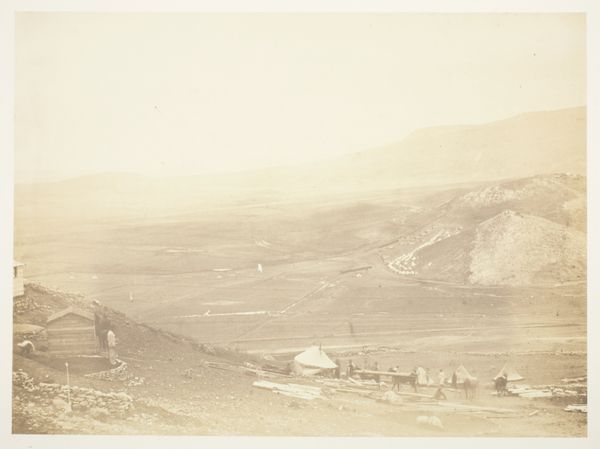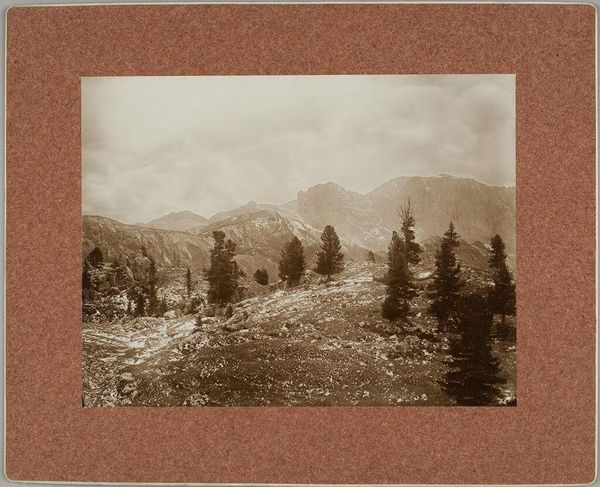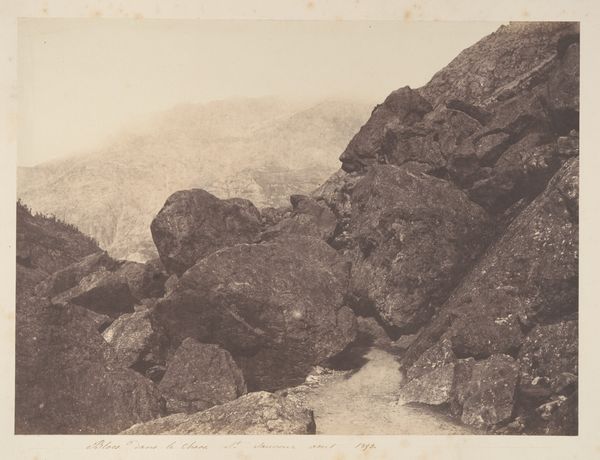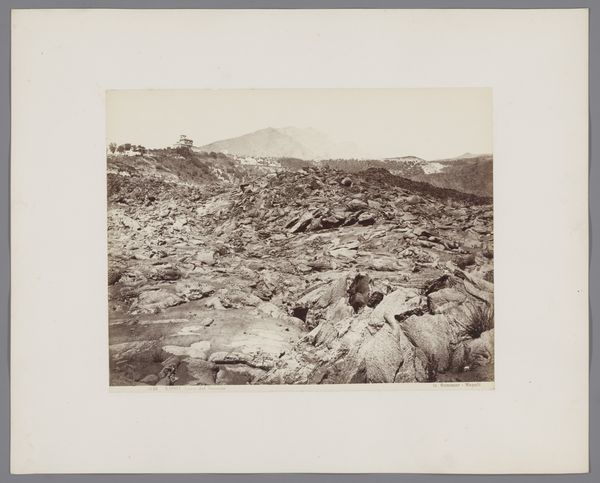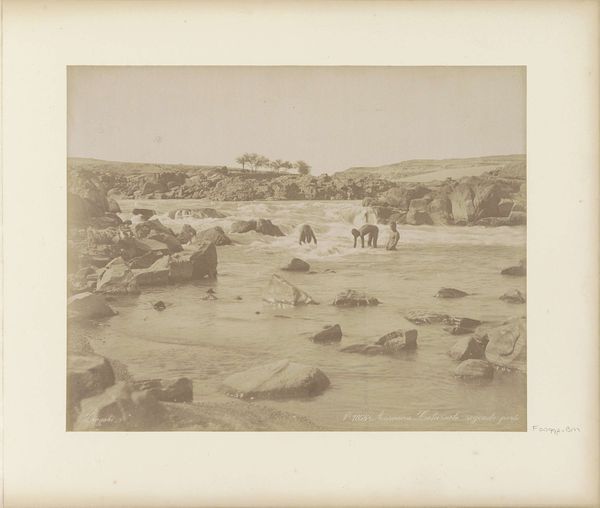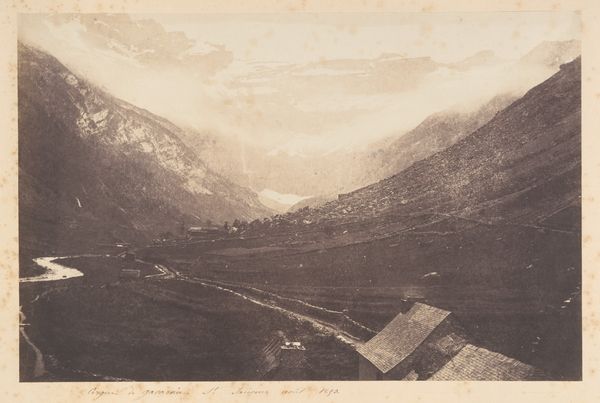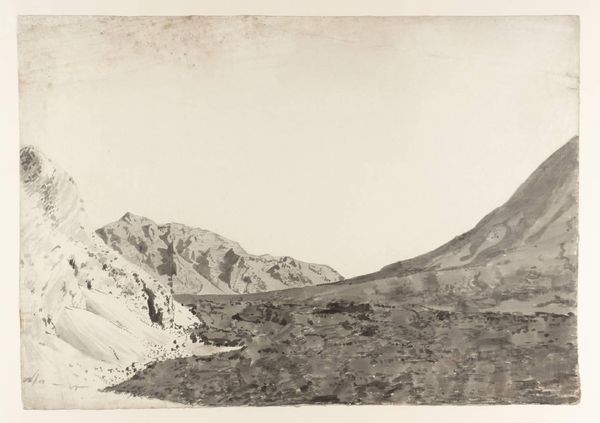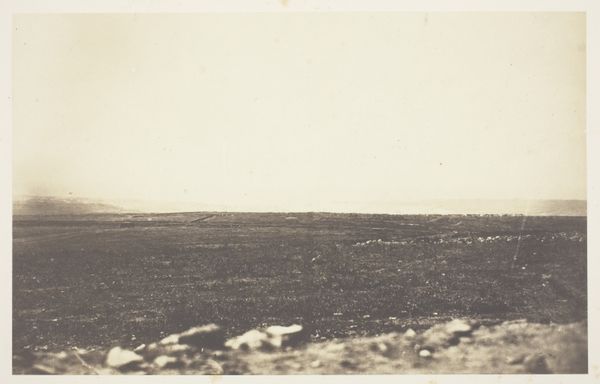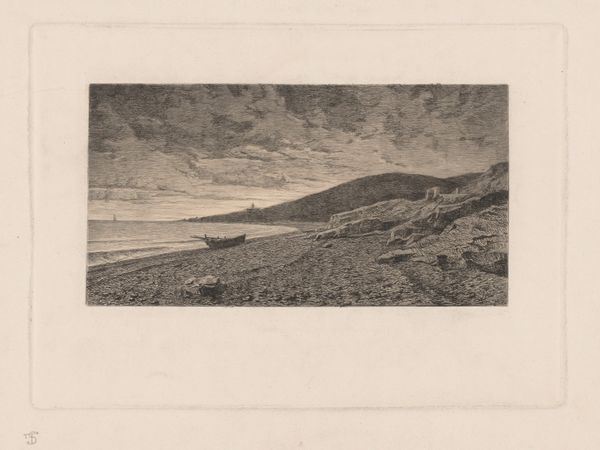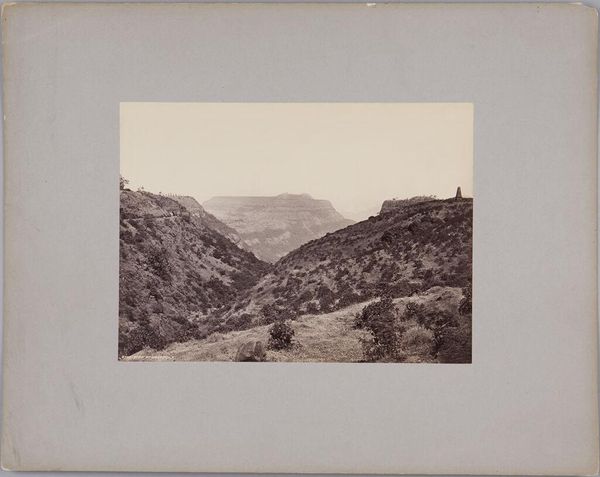
Ruïne van een huis aan de kust van (vermoedelijk) Sydney c. 1890 - 1910
0:00
0:00
charlesbayliss
Rijksmuseum
photography, site-specific, gelatin-silver-print
#
pictorialism
#
landscape
#
photography
#
orientalism
#
site-specific
#
gelatin-silver-print
Dimensions: height 241 mm, width 324 mm
Copyright: Rijks Museum: Open Domain
Editor: We're looking at Charles Bayliss's "Ruïne van een huis aan de kust van (vermoedelijk) Sydney," a gelatin silver print, likely from sometime between 1890 and 1910. It’s held at the Rijksmuseum. The composition has a serene, almost melancholic mood, but also speaks of colonization. What layers am I missing? Curator: You're right to pick up on the melancholic feel. Considering Bayliss was working during a time of intense colonial expansion in Australia, how do you read the 'ruin' in the landscape? What narratives are often silenced when depicting idealized or romanticized landscapes? Editor: It feels like it’s hinting at something beyond the picturesque—almost an unacknowledged history, maybe of displacement or dispossession tied to colonization, since there are ruins present. The emptiness is palpable. But maybe I'm reading too much into it? Curator: Not at all. I think situating this work within the framework of Pictorialism complicates this further, where the Indigenous presence is erased. Pictorialism, after all, often aimed to create idealized, artistic photographs, sometimes at the expense of representing reality or in directly acknowledging marginalized voices and obscured social relations. What does it mean to present a ruin so serenely, without acknowledging whose home this may have been, before the concept of ownership shifted in the region? Editor: So, Bayliss's romantic framing silences the violence and displacement of colonization, presenting a scene stripped of its historical and social weight? By presenting "the ruin" this becomes almost a tool of propaganda? Curator: Exactly! The artistry becomes a form of erasure. The picturesque scene actively normalizes a specific perspective of power. Now, let’s consider who benefited from those power structures during this period... Editor: It's unsettling to think about the beautiful aesthetic as potentially complicit in hiding a brutal reality. This gives me so much more to think about regarding whose voices and narratives are centered and who gets erased! Curator: Indeed, this forces us to confront the complex relationship between aesthetics and historical accountability when analyzing visual materials, and photography in particular!
Comments
No comments
Be the first to comment and join the conversation on the ultimate creative platform.

